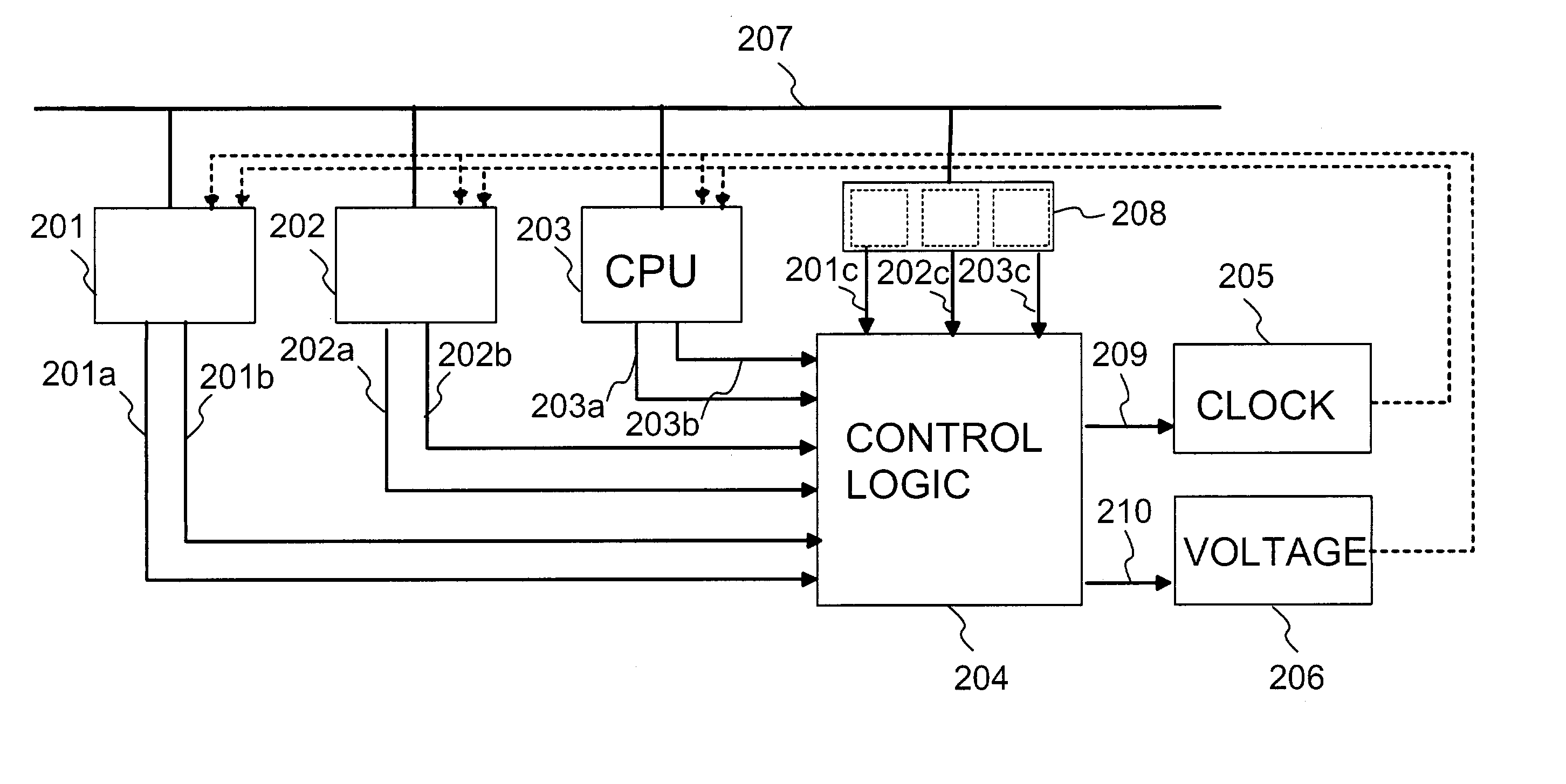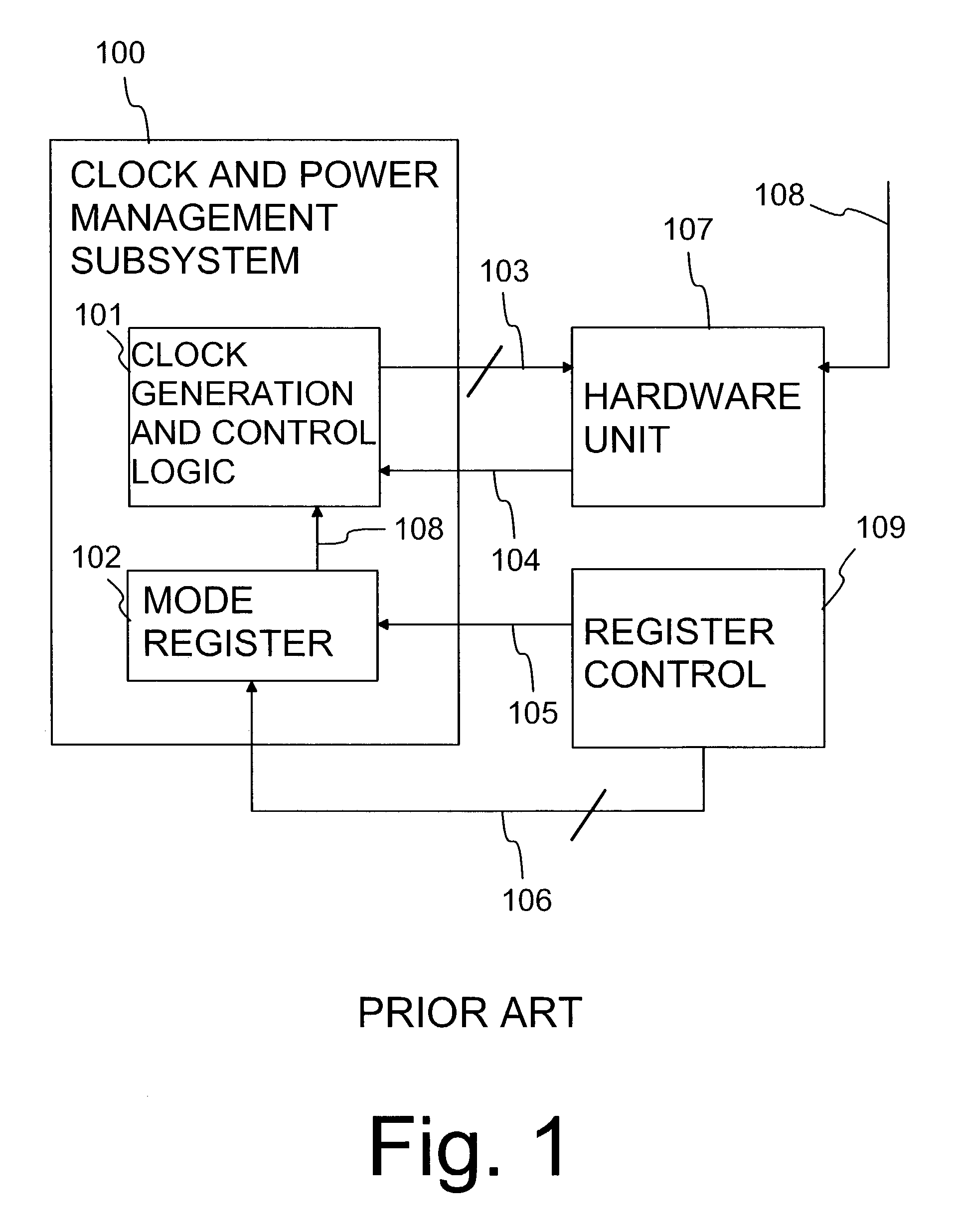Dynamic power control in integrated circuits
a technology of integrated circuits and power control, applied in the direction of liquid/fluent solid measurement, instruments, sustainable buildings, etc., can solve the problems of static power consumption, e.g., longer operating times possible without increasing the physical size of the device, and low power consumption, so as to simplify the structure and test the system, and save power functions. the effect of time and simplifying the structur
- Summary
- Abstract
- Description
- Claims
- Application Information
AI Technical Summary
Benefits of technology
Problems solved by technology
Method used
Image
Examples
Embodiment Construction
[0027]FIG. 1 has already been discussed above in the description of prior art.
[0028]FIG. 2 shows a system which is preferably implemented on a single ASIC circuit and comprises several hardware units 201–203, a power control logic 204, as well as clock frequency and operating voltage control units 205, 206. The hardware units 201–203 as well as the power control logic 204 are connected to communicate via a bus 207.
[0029]According to the invention, each single hardware unit 201–203 can generate a first status signal 201a–203a and a second status signal 201b–203b, which status signals are transferred to the power control logic 204.
[0030]Furthermore, requirement signals 201c–203c are transferred to the power control logic 204, transmitting information from a power control mode register 208 to the power control logic 204. The power control mode register 208 contains information for each hardware unit 201–203 about the clock frequency and / or operating voltage to be generated to the singl...
PUM
 Login to View More
Login to View More Abstract
Description
Claims
Application Information
 Login to View More
Login to View More - R&D
- Intellectual Property
- Life Sciences
- Materials
- Tech Scout
- Unparalleled Data Quality
- Higher Quality Content
- 60% Fewer Hallucinations
Browse by: Latest US Patents, China's latest patents, Technical Efficacy Thesaurus, Application Domain, Technology Topic, Popular Technical Reports.
© 2025 PatSnap. All rights reserved.Legal|Privacy policy|Modern Slavery Act Transparency Statement|Sitemap|About US| Contact US: help@patsnap.com



